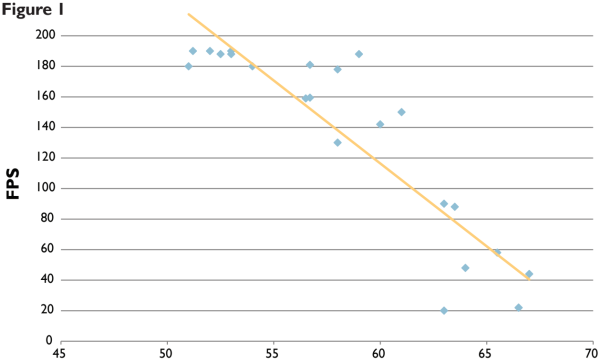By Martijn Gruyters
Pododermatitis (PD) or footpad dermatitis (FPD) is a type of contact dermatitis observed in broiler flocks. Ranging in significance from superficial to deep, the rash appears on the plantar surface of the footpads and toes. Deep ulcers can lead to abscesses, thickening of underlying tissues and structures, causing pain.
In Western Europe, occurrences of FPD are used as a measure of animal welfare as the condition can be greatly influenced by farm management.
A broiler with FPD spends less time feeding and drinking. This means lower final weights, less efficient feed conversion, and in severe cases, more downgrades due to breast blisters.
The most important predisposing factor for FPD is poor or wet litter conditions; especially in the first 18 days of the growing cycle. Research of Wageningen University in the Netherlands has shown a relation between the dry matter content of litter and the severity of FPD (fi gure 1).
Feed Influence
Nutrient composition of the feed and its availability affect proper development of the digestive organs and litter quality. Excess levels of certain minerals, particularly sodium (Na), chlorine (Cl) and potassium (K), must be avoided, as they stimulate excessive water intake, resulting in wet droppings. The use of specific raw materials, like tapioca, high levels of soya and raw materials with high levels of non-starch polysaccharides (NSP) should be carefully monitored. To improve digestibility, specific enzymes must be formulated in the diets.
To stimulate consumption early on, day-old chicks should have immediate easy access to feed. Presence of feed in the intestine will stimulate gastric and pancreatic juice secretion necessary for digestion and growth of the villi within 48 hours.
The height of the villi has an important influence on the absorption of the intestine. It affects the broiler’s ability to reabsorb water before producing droppings.
Overfeeding at later ages or a too intensive light program will also impair litter quality. Poor management of these issues can cause birds to need to remove excessive nutrients by increasing their water intake.
Drinker Management
Clean water is a vital component for successfully growing birds. Muscle tissues consist of 70% water, which is essential for many physiological processes including digestion, transport of nutrients and waste components, and of course, body temperature control. The way water is supplied needs careful management.
Controlling pressure in nipple drinking systems and water levels in open drinking systems should be closely monitored to avoid under or over supplying the birds with water. With a nipple fl ow meter, the water fl ow from a nipple can be measured and adjusted according to the standards for age, or to avoid oversupply and spillage.
The type of nipple maintenance and the presence of a drip cup can also influence PD incidence.

DM content litter %
Importance of ventilation
The birds, drinking system and feed all add moisture to the environment. Therefore, ventilation is the only manageable factor to remove this moisture.
Ventilation is needed to control temperature and, vitally, air quality – levels not only of ammonia and CO2, but of moisture/relative humidity. By not letting relative humidity increase to over 70%, the build-up of moisture in the litter is prevented.
A broiler of 2,500 grams at 42 days has produced about 5.565 kg of water not retained in the body and this needs to be removed by ventilation. If the ventilation is not able to remove this amount of water, it will increase the relative humidity in the house and cause wetter litter.
A minimum ventilation system should be designed so that the complete house volume of air is removed every eight minutes. If this is not sufficient to control the relative humidity, air exchange needs to be increased by decreasing the off-time of the fans.
Conclusion
Farm Management plays an important factor in preventing footpad dermatitis. Stocking density, type of bedding material, thinning process, temperature profile and removing the chick paper four days after placement, all affect the incidence of FPD.
All areas of the house, including the birds themselves, should be monitored daily. The overall aim is to keep the litter dry, especially in the critical first 18 days of a broiler’s life.


